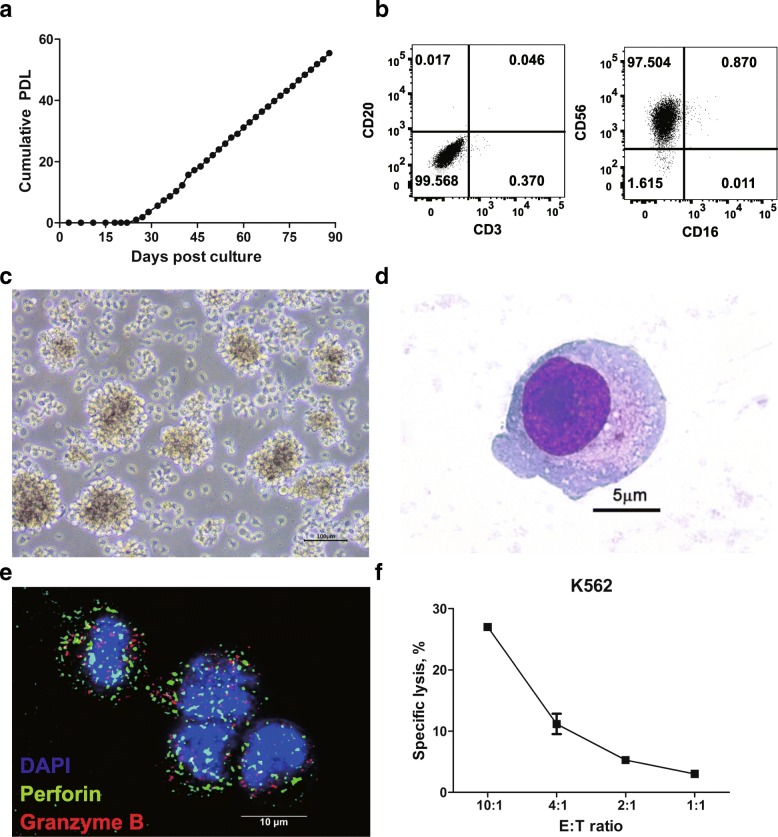Fig. 1.
A newly established cell line, NK101, with natural killer cell-like characteristics. a Primary mononuclear cells isolated from a patient’s lesion were cultured for more than 90 days. Cell growth is displayed as cumulative population doubling level (PDL) for 90 days. b Lineage phenotype of isolated tumor cells was analyzed by flow cytometry. Cells were stained with fluorochrome-conjugated antibodies specific to CD3, CD16, CD20, and CD56. Representative dot plots from 2 independent experiments were displayed after gating singlets and live cells. The numbers indicate the percentage of cells in each quadrant. c Growing morphology of NK101 cells in culture is displayed as light microscopic image. 400X magnification. Scale bar = 100 μm. d Morphology of a single NK101 cell was visualized under light microscopy after Wright-Giemsa staining. 1000X magnification. Scale bar = 5 μm. e Expressions of perforin and granzyme B in NK101 cells were visualized by confocal microscopy after staining with Alexa Fluor 488-conjugated anti-perforin antibody (green), Alexa Flour 647-conjugated anti-granzyme B antibody (red), and DAPI counter-staining (blue). 1000X magnification. Scale bar = 10 μm. f NK101 cells were co-cultured with carboxyfluorescein diacetate succinimidyl ester (CFSE)-labeled K562 cells at the indicated effector-to-target (E:T) ratio for 24 h. Apoptotic and dead cell population were discriminated by Annexin-V and fixable viability dye staining, followed by flow cytometric analysis. Percentage of specific lysis percentage was calculated by the formula described in Online Additional file 2. Data represent mean ± SD of 3 independent experiments

